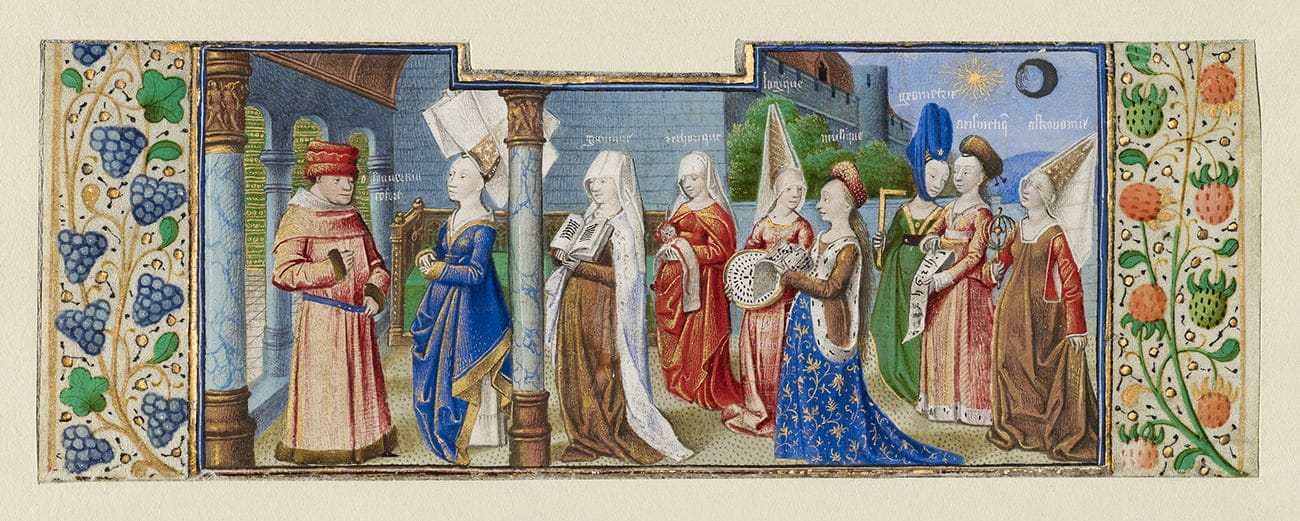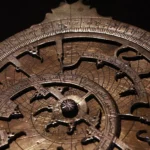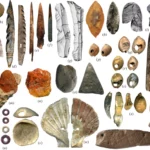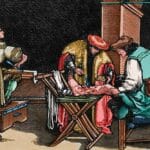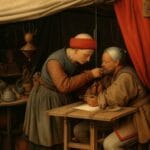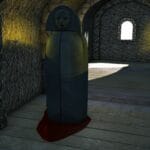Imagine being transported back to a time when the night sky held a captivating allure for our ancestors. During the Middle Ages, astronomers, fueled by insatiable curiosity and a profound reverence for the celestial sphere, dedicated their lives to unraveling the cosmos’ mysteries. Their discoveries, both profound and, at times, erroneous, laid the groundwork for our modern understanding of the universe. Let’s embark on an enlightening journey through the celestial tapestry woven by these medieval stargazers, uncovering the wonders and wisdom that shaped their worldview.
Astronomy in the Middle Ages
Contrary to popular belief, the Middle Ages wasn’t just an era of knights and castles; it was also a time of significant astronomical pursuit. While many associate this period with alchemy and superstition, medieval people were deeply interested in understanding the cosmos. Astronomy wasn’t merely a pastime; it was believed that celestial objects significantly influenced everyday life.
People in the Middle Ages believed that the movements of the sun, moon, and planets held sway over a vast range of earthly affairs. From an individual’s health and personality to the success of crops, these celestial wanderers were thought to shape destiny itself. This fusion of astronomy and astrology held immense importance, becoming deeply ingrained in various fields, including medicine, philosophy, and religion. Astrological charts, meticulously consulted, offered insight into the perceived connection between zodiac signs and a person’s well-being.
Medieval thinkers weren’t content with passive observation; they actively sought to expand upon the astronomical knowledge inherited from ancient civilizations. These scholars, driven by a thirst for knowledge, developed intricate theories about planetary motion, devised innovative tools to track lunar phases, and even constructed sophisticated tables to predict celestial events like eclipses.
The 12th century brought a pivotal turning point: the translation of numerous Arabic texts into Latin. These texts, brimming with astronomical insights gleaned from centuries of observation and study, ignited a resurgence of astronomical interest in Europe. New theories, such as the geocentric model, which posited Earth at the universe’s center, sparked lively debate and refinement. To further their studies, scholars founded observatories, including the renowned institution at Oxford, seeking a clearer view of the heavens.
The impact of medieval astronomy extended far beyond the realm of stargazing. It played a crucial role in navigation, guiding sailors across vast oceans. Furthermore, it influenced the development of calendars, allowing for more accurate timekeeping. Perhaps most significantly, medieval astronomy laid the groundwork for the scientific revolution, paving the way for the development of physics, mathematics, and other scientific disciplines.
What was astrology in the Middle Ages?
In the Middle Ages, astrology wasn’t just a fun way to read your horoscope; it was an integral part of life, influencing everything from medicine to politics. Imagine a time when the night sky wasn’t just something pretty to look at but a source of powerful knowledge; that was the Middle Ages, where astronomy (figuring out where the stars and planets actually are) and astrology (believing those celestial objects could tell us about ourselves and our future) were two sides of the same coin.
Medieval Europe’s fascination with astrology stemmed largely from the Byzantine and Islamic worlds. Scholars, hungry for knowledge, diligently translated countless Arabic manuscripts, many laden with ancient astronomical and astrological theories. These texts, often refined and expanded upon by Islamic thinkers, breathed new life into European astrology.
But what did people do with astrology back then? Well, it wasn’t just about figuring out if you were compatible with a Gemini. Astrology was seen as a way to understand pretty much everything! People believed the positions of the planets and stars could influence everything from your health and personality to whether your crops would grow. It’s wild to think about, right?
What’s truly captivating is that we’re still piecing together the complete picture of medieval astrology. While some aspects, like the significant influence of Arabic scholars, are widely acknowledged, other areas remain shrouded in mystery and debate. For instance, historians are still trying to unravel precisely how different social groups engaged with astrology. Did everyone subscribe to its principles? Were there skeptics who questioned its validity? It’s like a giant puzzle, and each new discovery adds another piece, gradually revealing the intricate tapestry of astrology’s significance in the Middle Ages.
How was astronomy used in ancient times?
Long before the Middle Ages, even before the rise of the Roman Empire, ancient civilizations found ingenious ways to incorporate astronomy into their daily lives. It wasn’t just about gazing at the stars; it was about understanding their rhythms and cycles, using them to tell time, plant crops, and even navigate the vast oceans.
Imagine a world without calendars, clocks, or GPS. How would you track the changing seasons, know when to plant crops, or navigate across vast distances? Ancient civilizations, from the Egyptians to the Mayans, found ingenious solutions in the stars above.
Timekeeping and Calendars: Following the Celestial Rhythm
For ancient cultures, the sky was a giant clock, with the sun, moon, and stars serving as celestial hands marking the passage of time. They carefully observed these cosmic cycles to create calendars that guided their agricultural practices and religious ceremonies. The Egyptians, for example, developed a solar calendar based on the annual flooding of the Nile River, a phenomenon that coincided with the rise of the star Sirius. Similarly, the Mayans, renowned for their sophisticated understanding of time, created a complex calendar system incorporating the cycles of the sun, moon, and Venus.
Navigation: Steering by the Stars
Long before the invention of compasses and nautical charts, intrepid sailors turned to the heavens for guidance. The stars acted as celestial landmarks, allowing them to navigate across vast oceans and reach distant shores. The Polynesians, master seafarers of the Pacific, used their knowledge of star patterns, ocean currents, and bird migration to explore and populate islands scattered across thousands of miles. Their celestial navigation skills were so advanced that they could pinpoint their location even on cloudy nights, using the subtle movements of the ocean swells as clues.
Agriculture: Planting by the Stars
For ancient civilizations heavily reliant on agriculture, knowing when to plant and harvest crops was crucial for survival. By observing the rising and setting times of certain stars, they could predict the changing seasons and determine the optimal time for agricultural activities. The ancient Egyptians, for example, used the heliacal rising of Sirius—its first annual appearance in the morning sky—to signal the imminent flooding of the Nile, a vital event for their agricultural cycle.
Mythology and Religion: Stories Written in the Stars
Gazing up at the night sky, ancient civilizations saw more than just celestial objects—they saw gods, goddesses, and mythical creatures brought to life in the constellations. They wove intricate stories and beliefs around the stars, linking the celestial realm with their earthly existence. In Greek mythology, for instance, constellations represented heroes, monsters, and legendary tales, shaping their understanding of the cosmos and their place within it. The Egyptians, too, associated their gods and goddesses with prominent stars and constellations, believing that the movements of these celestial bodies influenced events on Earth.
Monumental Architecture: Aligning with the Cosmos
Many ancient cultures demonstrated their reverence for the celestial realm through their architecture, aligning their temples, pyramids, and other structures with astronomical events. Stonehenge in England, with its massive stones arranged in a circular pattern, is believed to have served as an astronomical observatory, tracking the movements of the sun and moon to mark solstices and equinoxes. Similarly, the pyramids of Giza in Egypt are remarkably aligned with the cardinal points and certain stars, suggesting an astronomical connection in their construction.
Astrology: Seeking Meaning in the Stars
Just as in the Middle Ages, the practice of astrology was deeply intertwined with astronomy in ancient times. People looked to the positions of the stars and planets for insights into their personalities, relationships, and destinies. While astrology is not considered a science today, it played a significant role in shaping the worldview and decision-making of ancient civilizations.
Ongoing Discoveries: Unraveling Ancient Mysteries
Our understanding of ancient astronomy continues to evolve as archaeologists and historians unearth new artifacts and decipher ancient texts. The Antikythera Mechanism, a complex astronomical calculator discovered in an ancient Greek shipwreck, has revolutionized our understanding of the technological sophistication of ancient civilizations. This intricate device, dating back over 2,000 years, could track the movements of celestial bodies, predict eclipses, and even account for the irregular orbit of the moon. Such discoveries remind us of the ingenuity and advanced astronomical knowledge possessed by our ancestors.
What did Muslims do for astronomy?
The Islamic Golden Age, spanning roughly from the 8th to the 13th centuries, was a time of unprecedented intellectual flourishing in the Muslim world. During this era, Islamic scholars made significant contributions to various fields, including mathematics, medicine, and, notably, astronomy. They were, in many ways, the astronomical torchbearers of their time.
Driven by a deep reverence for knowledge and a quest to understand the universe’s intricacies, Muslim scholars embarked on a mission to preserve, translate, and build upon the astronomical wisdom of earlier civilizations. They collected texts from India, Persia, Greece – any source they could find – and meticulously translated them, often adding their own observations and insights. Ptolemy’s Almagest, a comprehensive astronomical treatise written in the 2nd century, served as a cornerstone of their studies.
But Islamic scholars didn’t confine themselves to the pages of ancient texts; they were keen observers of the night sky. They constructed impressive observatories, essentially open-air laboratories dedicated to studying celestial objects. Baghdad’s observatory, for example, became a renowned center for astronomical research, attracting brilliant minds from across the Islamic world.
In these observatories, astronomers like Al-Battani meticulously charted the stars, painstakingly measuring celestial phenomena. They refined calculations for the Earth’s axial tilt, the duration of a solar year, and other astronomical constants, achieving levels of accuracy that surpassed previous estimates. Moreover, Islamic astronomers excelled in instrument making, crafting precise tools like astrolabes and quadrants that enhanced their observational capabilities.
What set Islamic scholars apart was their remarkable ability to synthesize knowledge, blending sophisticated mathematics with their astronomical observations. They developed intricate models to explain the movements of planets, and their calculations proved surprisingly accurate. One notable achievement was Al-Battani’s treatise on trepidation, a sophisticated explanation for the Earth’s axial precession—the slow wobble of Earth’s axis of rotation.
The contributions of Islamic scholars to astronomy during the Middle Ages cannot be overstated. Their dedication to preserving ancient knowledge, their meticulous observations, and their groundbreaking innovations laid the foundation for the Scientific Revolution that would transform Europe centuries later. Their work serves as a testament to the power of intellectual curiosity and the enduring legacy of cross-cultural exchange in the advancement of knowledge.
What is astronomy through ages?
Astronomy, the study of celestial objects and phenomena, has captivated humankind since time immemorial. From ancient civilizations charting the stars to modern astronomers peering into the universe’s farthest reaches, our understanding of the cosmos has been a journey of discovery, innovation, and ever-evolving perspectives.
The Middle Ages, often perceived as a period of intellectual darkness, were, in reality, a time of significant astronomical development. Medieval astronomers, building upon the knowledge passed down from ancient Greece, India, and the Islamic world, made remarkable strides in understanding the celestial tapestry. They developed intricate models to explain planetary motion, constructed sophisticated instruments for observation, and meticulously recorded celestial events. This era saw the rise of observatories, centers of learning where scholars could gather to study the heavens, and the development of astronomical tables used for navigation, timekeeping, and astrological predictions.
Here are some key takeaways about astronomy in the Middle Ages:
- A Blend of Science and Spirituality: Astronomy in the Middle Ages wasn’t solely a scientific pursuit; it was deeply intertwined with astrology, religion, and a belief in the interconnectedness of the cosmos and earthly affairs.
- The Islamic Golden Age: Islamic scholars played a pivotal role in preserving, translating, and expanding upon astronomical knowledge from ancient civilizations. Their contributions, particularly in mathematics and observational techniques, significantly influenced the development of astronomy in both the East and the West.
- Instruments and Observational Techniques: Medieval astronomers developed and refined instruments like the astrolabe, allowing for more precise measurements of celestial positions. These advances in observational techniques contributed to increasingly accurate astronomical data.
- Laying the Groundwork for the Scientific Revolution: The work of medieval astronomers, while often influenced by astrological beliefs, laid the groundwork for the Scientific Revolution that would sweep Europe centuries later. Their meticulous observations, mathematical calculations, and innovative instruments paved the way for a new era of scientific inquiry based on empirical evidence and mathematical reasoning.
Astronomy has come a long way since the Middle Ages. We’ve gone from observing the sky with the naked eye to using powerful telescopes that can peer billions of light-years into the universe’s depths. We’ve sent probes to other planets, landed rovers on Mars, and captured stunning images of distant galaxies.
Despite these remarkable advancements, the core motivation behind astronomy remains unchanged: to quench our thirst for knowledge about the cosmos and our place within it. As we continue to explore the universe’s mysteries, we do so standing on the shoulders of countless astronomers throughout history who dared to look up at the stars and dream of unraveling their secrets.
What was astronomy like in the Middle Ages?
Imagine a world illuminated by flickering candlelight, where the night sky, unpolluted by artificial light, blazed with a million twinkling stars. For people in the Middle Ages, the cosmos was not a distant, abstract concept but an ever-present reality, its rhythms and cycles intertwined with their daily lives.
Medieval astronomy was a fascinating blend of science, spirituality, and observation. Astronomers of this era meticulously tracked the movements of celestial bodies, diligently recording eclipses and planetary positions with a sense of awe and reverence. They believed that these celestial events held profound meaning, influencing life on Earth in ways both subtle and significant.
The Islamic Golden Age, spanning roughly from the 8th to the 13th centuries, witnessed a remarkable flourishing of astronomical knowledge. Muslim scholars, building upon the works of ancient Greek, Indian, and Persian astronomers, made groundbreaking discoveries that would shape the course of astronomy for centuries to come. They constructed impressive observatories, developed sophisticated astronomical instruments like the astrolabe, and refined mathematical models to explain the movements of celestial objects with remarkable accuracy.
The astrolabe, in particular, became an indispensable tool for both astronomers and navigators. This ingenious device, capable of measuring the altitude of celestial bodies and determining local time, revolutionized navigation, allowing sailors to venture farther from shore with greater confidence.
Medieval astronomy’s influence extended far beyond the realm of science. Astrological symbols and imagery found their way into art, architecture, and literature, reflecting the era’s deep fascination with the cosmos. Cathedrals, often conceived as microcosms of the universe, were adorned with astronomical motifs, their stained-glass windows depicting constellations and zodiac signs.
To summarize the key characteristics of medieval astronomy:
- A Fusion of Science and Spirituality: Astronomy in the Middle Ages was deeply intertwined with astrological beliefs, reflecting a worldview where the heavens and Earth were inextricably linked.
- Meticulous Observation and Record-Keeping: Medieval astronomers placed great importance on observing and recording celestial events, believing they held clues to understanding earthly affairs.
- The Islamic Golden Age: Muslim scholars made groundbreaking contributions to astronomy, developing sophisticated instruments, refining mathematical models, and preserving ancient knowledge.
- The Astrolabe: A Revolutionary Instrument: The astrolabe, a versatile astronomical instrument, revolutionized navigation and timekeeping, becoming an essential tool for both astronomers and seafarers.
- Astronomy in Art and Culture: The influence of astronomy permeated medieval art, architecture, and literature, reflecting the era’s deep fascination with the cosmos.
Medieval astronomy, with its blend of observation, theory, and mystical belief, might seem a far cry from modern astrophysics. Still, it was a vital stepping stone, paving the way for the scientific discoveries that would follow.
Is astrology true in Islam?
While Islamic scholars were at the forefront of astronomical advancements during the Middle Ages, their stance on astrology was far more complex and nuanced. While embracing astronomy for its practical applications in areas like timekeeping and navigation, they drew a clear distinction between this scientific pursuit and the practice of astrology.
In Islam, the belief that anything other than God possesses knowledge of the unseen, including the ability to predict the future, is considered shirk, a major sin. Astrology, with its claims of revealing hidden knowledge about people’s lives and destinies based on the position of celestial bodies, directly contradicted this fundamental Islamic principle.
Many prominent Muslim scholars, such as Al-Farabi and Ibn al-Haytham, openly criticized astrology, arguing that it lacked a sound scientific basis. They maintained that while astronomy, with its focus on observing and understanding the physical universe, was a legitimate scientific pursuit, astrology, with its attempts to divine future events and human affairs from the stars, was mere conjecture and superstition.
Despite their rejection of astrology, Islamic scholars remained deeply fascinated by the cosmos. Their contributions to astronomy during the Islamic Golden Age were nothing short of groundbreaking, laying the foundation for future scientific advancements. Their meticulous observations, sophisticated mathematical models, and innovative instruments helped refine our understanding of the universe and our place within it.
In essence, while astrology faced significant criticism and rejection within Islamic intellectual circles, astronomy flourished, driven by a thirst for knowledge, a commitment to observation, and a deep reverence for the universe’s wonders. The legacy of Islamic astronomy continues to inspire and influence scientific inquiry today, reminding us of the power of curiosity and the enduring quest to unlock the universe’s secrets.
What was astrology used for in ancient times?
Step back in time and imagine a world where the night sky wasn’t just a backdrop but a source of profound meaning and guidance. In ancient times, astrology, deeply intertwined with astronomy, was more than just a way to glimpse into the future; it was a complex system of beliefs that permeated every aspect of life, influencing decisions both big and small.
Ancient cultures, from the Babylonians to the Egyptians and Greeks, looked to the stars for answers, believing that the celestial realm held sway over earthly affairs. Astrology was seen as a way to understand the universe’s rhythms and cycles and how those cycles influenced everything from the fate of nations to an individual’s personality and destiny.
Here’s a glimpse into how ancient civilizations integrated astrology into their daily lives:
- Guidance for Rulers: Kings and queens often consulted astrologers before making critical decisions, whether waging war, signing treaties, or even choosing a spouse. These celestial advisors, believed to possess specialized knowledge of the stars’ influence, held significant sway in royal courts.
- Agricultural Planning: For ancient societies heavily reliant on agriculture, knowing when to plant and harvest crops was crucial for survival. Astrological calendars, based on the cycles of the sun, moon, and stars, helped farmers determine the optimal time for sowing, tending, and harvesting their fields, ensuring a bountiful yield.
- Navigation at Sea: Before the invention of compasses and modern navigational tools, sailors relied on the stars to guide them across vast oceans. Astrology, intertwined with their knowledge of constellations and celestial navigation, helped them chart their course, ensuring safe passage to distant lands.
- Sacred Architecture: Astrology’s influence extended to architecture, particularly the construction of temples and other sacred spaces. Many ancient structures were meticulously aligned with celestial events, such as solstices and equinoxes, reflecting a belief in the interconnectedness of the cosmos and the human world.
- Myths and Legends: Astrology permeated ancient mythology and storytelling. Gods and goddesses were often associated with specific stars or planets, their movements and interactions in the celestial realm reflected in earthly events and human affairs.
Astrology in ancient times wasn’t merely a set of beliefs; it was a way of life. While its methods and interpretations may seem foreign to our modern sensibilities, it’s essential to recognize that astrology, rooted in observation and a desire to comprehend the universe and humanity’s place within it, played a crucial role in shaping the beliefs, practices, and worldviews of ancient civilizations.
How did medieval people use astrology to explain disease?
In the tapestry of medieval life, where faith and reason intertwined, astrology held a prominent place, influencing not only the perception of celestial bodies but also the understanding of human health and disease. Medieval physicians, often well-versed in astrological principles, believed that the stars held valuable clues to diagnosing and treating illnesses.
Imagine a time when doctors consulted astrological charts alongside examining their patients. Medieval medical practitioners believed that the alignment of celestial bodies at the time of a person’s birth could influence their constitution, predisposing them to certain illnesses. Each planet was thought to govern specific organs and bodily functions, and their positions relative to the zodiac signs at the moment of birth were considered crucial in determining an individual’s health prospects.
For instance, Mars, the fiery red planet named after the Roman god of war, was associated with blood and fever. Someone born under a strong Martian influence, according to medieval astrologers, might be more susceptible to inflammatory conditions, skin ailments, or ailments related to blood circulation.
The moon, with its cyclical waxing and waning, was believed to hold considerable sway over bodily fluids, particularly those governing the brain and emotions. Individuals born under a powerful lunar influence might be thought to possess a more phlegmatic temperament, characterized by calmness and emotional sensitivity. However, they might also be prone to imbalances in bodily fluids, leading to conditions like dropsy or mental instability.
Astrology’s influence on medieval medicine extended beyond diagnosis. Treatment often involved restoring balance to the body’s “humors,” the four primary fluids—blood, phlegm, yellow bile, and black bile—believed to govern health. Bloodletting, a common practice, was often timed according to astrological charts, with physicians believing that the position of the moon and other celestial bodies could influence the procedure’s effectiveness.
While these astrological interpretations of disease may seem far-fetched today, it’s essential to view them through the lens of medieval knowledge and beliefs. Medieval physicians, operating within a framework that saw the cosmos and the human body as interconnected, sought to understand and treat illness holistically. They believed that by understanding the celestial influences that shaped an individual’s constitution, they could better diagnose, treat, and even potentially prevent disease.
What was the real purpose of astrology?
The allure of astrology, with its promise of glimpsing into the future and understanding the forces shaping our lives, has captivated humans for millennia. But what was its real purpose, particularly during the Middle Ages when its influence permeated nearly every aspect of society?
In the medieval mind, astrology wasn’t merely a tool for fortune-telling; it was a complex system of knowledge that sought to connect the celestial realm with earthly events. Astronomy and astrology were often seen as two sides of the same coin, with astronomy providing the observational data and astrology interpreting the meaning and influence of those observations.
Astrologers served as advisors to kings and queens, offering counsel on matters of state, warfare, and even marriage based on their interpretations of celestial omens and the alignment of stars. They created personalized horoscopes, detailing an individual’s strengths, weaknesses, and potential life path based on the position of celestial bodies at their birth.
Beyond these individual and political applications, astrology played a vital role in medieval agriculture. Farmers relied on astrological calendars to determine the optimal time for planting and harvesting crops, believing that the moon’s phases and the position of stars could influence the success of their endeavors.
While modern science has largely debunked astrology’s claims, it’s essential to recognize that its purpose extended beyond mere prediction. For medieval people, astrology offered a sense of order and meaning in a world often perceived as chaotic and unpredictable. It provided a framework for understanding the complexities of life, death, and the forces shaping human destiny.
The decline of astrology’s influence began during the Renaissance, a period marked by a renewed interest in classical learning and a shift toward empirical observation and scientific inquiry. As scientists began to unravel the mysteries of the universe through observation and experimentation, the reliance on astrological interpretations gradually waned.
Despite its diminished role in our modern world, astrology’s legacy endures, reminding us of humanity’s enduring fascination with the cosmos and our relentless pursuit to comprehend our place within its grand design.
What did the Elizabethans think about astrology?
The Elizabethan era, a period of remarkable cultural and intellectual flourishing in England, witnessed a resurgence of interest in astrology. For Elizabethans, the stars weren’t merely distant celestial objects; they were believed to hold powerful sway over human affairs, influencing everything from health and personality to the fate of nations.
Imagine a time when consulting an astrologer wasn’t considered fringe or taboo but a respected practice embraced by individuals from all walks of life. Queen Elizabeth I herself relied on the counsel of Dr. John Dee, a prominent scholar, mathematician, and astrologer, who famously selected the most auspicious date for her coronation based on his astrological calculations.
Elizabethan astrology, deeply rooted in Renaissance thought, drew upon a blend of Christian, Hermetic, and ancient Greek philosophies. It differed significantly from the more psychologically-oriented astrology practiced today. Elizabethans were particularly interested in natal astrology, believing that the position of celestial bodies at the time of a person’s birth could reveal their character, strengths, weaknesses, and even their destiny.
Astrological almanacs, filled with predictions about the year ahead, were immensely popular, offering insights into everything from weather patterns and agricultural prospects to political events and potential outbreaks of disease. People from all levels of society consulted these almanacs, seeking guidance and reassurance in an era marked by both progress and uncertainty.
While we might view astrology with a more skeptical eye today, it’s essential to recognize its profound influence on Elizabethan thought and culture. It offered a framework for understanding the world, a means of coping with uncertainty, and a source of guidance in an era marked by significant change and transformation. The Elizabethan era’s fascination with the stars reminds us of humanity’s enduring quest to comprehend the cosmos and our place within its grand design.
If you’re curious to delve deeper into the world of medieval astronomy and the fascinating instruments used to study the heavens, be sure to explore the astrolabe definition in world history. This ingenious device, a testament to human ingenuity, played a pivotal role in shaping our understanding of the cosmos.
- Senior at What Age: Benefits & Eligibility Guide - March 29, 2025
- Unlocking Senior Benefits: How Old is a Senior? Your Complete Guide - March 29, 2025
- Master Russian Politeness:A Guide to Saying Please - March 29, 2025
